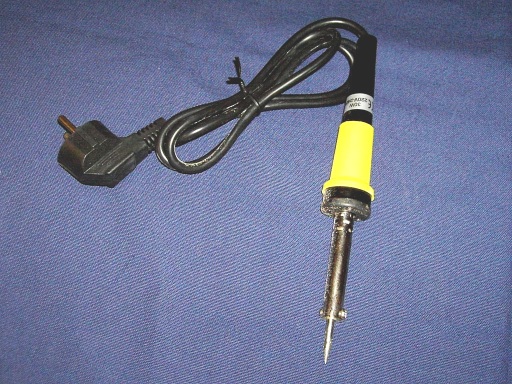Thursday, March 7, 2013
Why You Need a Temperature-Controlled Soldering Iron
Ever done any soldering? If so, you used a soldering iron to melt a tin alloy. If you started in a class or group, you likely used a cheap “pencil-type” tool like this:

All these reasons are why you need a temperature-controlled soldering iron. The difference is simple: a temperature-controlled iron has a thermostat which switches off the heater when the selected temperature is reached. This means it can have a more powerful heating element, so it heats things up faster. When the iron is unused, the element is switched on just enough to maintain the set temperature and does not overheat, maintaining a better tip surface. Plus you can set the temperature to match the kind of solder you are using (hotter for lead-free), turn it down to solder delicate or heat-sensitive parts, or turn it up to work on large or heat-conductive terminals.
So this sophisticated functionality will cost you a little more, but it is completely worth it. Particularly if you are a beginner, it will save you a lot of frustration and speed your advance up the learning curve. I personally recommend the Weller WS51, but there are excellent models made by Hakko, ERSA, and Duratool among others. You will likely need to pay $50 or more but this is one of those particular cases when it is absolutely the right tool for the job.
Beware that some irons may look temperature-controlled when they are only “adjustable” -- they have a control knob that merely adjusts the power to the element. Since they are open-loop the temperature is not really controlled at all. A good temperature-controlled iron will have a knob with a numbered temperature scale; if it is only labeled something like “min-max” there's a good chance it is merely adjustable.
Though there are lots of resources about leaning to solder, I particularly recommend the “Soldering is Easy” comic book created by my friends Jeff “Mightyohm” Keyser and Mitch Altman